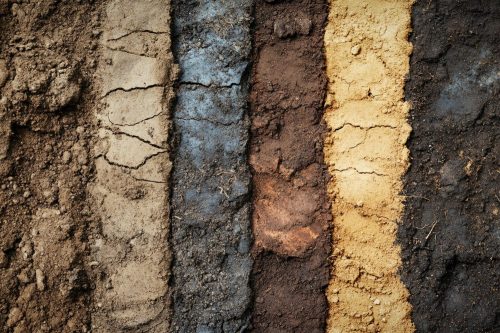Understanding soil types: Which is best for your plants?
You need soil for your garden to flourish, but if you think different types of soil are interchangeable then you’re on the wrong track
You need soil for your garden to flourish, but if you think different types of soil are interchangeable then you’re on the wrong track.
Indeed, soil and types of soil will have an impact on green-fingered success, so it’s important you understand their differences and how they can be used.
Soil is not just dirt; in fact, it’s a complex mix of minerals and organic matter, air and water that’s perfectly balanced to support life.
Soil and types
Here we look at different soil types and how plants can be grown successfully in them.
Loam
Loam is one of the best types of soil around for gardening.
When poets from Pam Ayres to TS Elliot write about earth, they use the word loam to conjure up a soft moisture-rich mixture of mostly equal parts of silt, sand and clay, which make it so perfect for any plant.
In early spring, you can depend upon loam to warm up while in summer it won’t dry out so you can use it throughout the year.
In short:
Loam’s mixture of clay, sand and silt ensures this soil has the perfect balance when growing plants.
Clay
What makes clay so dense are the natural soil particles packed tightly together with little room for any air.
As a soil type, it is not easy to work with when planting a garden because air and moisture cannot easily penetrate its structure.
However, if you have a garden that’s full of clay, do not be disheartened.
Unlike other various types of soil, clay will provide the water and nutrients required for a plant’s survival.
Key to working with clay is to resist winter freezing. The way to do this is to add mulch, or compost to the top layer each autumn, then leave it until spring.
By adding organic material, you will increase the chances of improving drainage and air flow and it should also make planting much easier.
In short: A heavy soil, high in nutrients, wet and cold in winter and baked dry in summer
Silt
Among the types of soiling you might find in a garden; silt is one of the more versatile and easier to use.
This is because it’s composed of very fine particles that make the spoil easy to compact, and that means moisture and nutrients can be held in place for long periods.
In short: Silt soils are fertile, light but moisture-retentive, and easily compacted
Chalky
Chalky or lime rich soils are alkaline, so will not support ericaceous plants or acid-loving plants that include rhododendrons, camellias, heathers and blueberries.
In short: Soil that is very alkaline and may be light or heavy
Topsoil
Topsoil is the answer if you do have problems with plant growing because of the types of soils in your garden.
Unlike the clay, silt, and chalk you might find beneath your borders and lawn, topsoil is a material which has been commercially produced to replace the soil which is causing you difficulties.
It works because it’s very nutrient dense, bringing together between two and 10 per cent of organic materials.
Topsoil is a commercially produced material that can be used to supplement or replace difficult soil in gardens.
Do not be afraid to use topsoil when gardening, because it’s a fantastic source of vital nutrients.
It can also balance pH levels and help to controls rates of moisture and evaporation.
Even professional gardeners will reach for topsoil should they need it.
One thing they won’t do though is pour it onto the top of existing soil without blending or mixing as this could lead to issues with drainage and over-watering.
To counter this, all you have to do is mix the topsoil with the dirt already there and this ensures that moisture flows freely between the two.
There’s no time like the present to start thinking about getting your garden ready for planting so take a look at essential types of the soil in the range at Forward Builders’ Supplies.










The information below is required for social login
Login
Register
Fill in the form below to create your new account